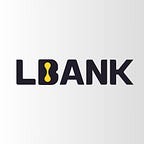Introducing DN-404 and ERC-404: Innovations in Ethereum Token Standards
The Ethereum ecosystem is currently experiencing an exciting phase of innovation with the introduction of two new token standards, DN-404 and ERC-404. These developments are not so much a battle but a showcase of the evolving landscape of NFT decentralization and the broader potential of blockchain technology.
Exploring DN-404 and ERC-404
Let’s take a closer look at what DN-404 and ERC-404 bring to the table. These tokens are designed to transform the dynamics of NFT transactions, including buying, selling, and trading. ERC-404, initiated by the Pandora team, was the first to make its mark by integrating ERC20 tokens with NFTs, aiming for a decentralized vision. However, the rise in Ethereum transaction fees prompted the development of DN-404 as an alternative, focusing on efficiency and lower transaction costs.
DN-404: A New Perspective
DN-404 emerges as a fresh contender, offering similar advantages to ERC-404 but with a focus on higher efficiency and reduced transaction costs. It employs a dual-contract approach, combining an ERC-20 based contract for divisible token shares with a mirrored ERC-721 contract for unique NFTs. This innovative structure aims to address the limitations of its counterpart while ensuring compatibility with existing standards. DN-404’s emphasis on efficiency and security has quickly attracted the attention of developers and users alike.
ERC-404: Innovation with Considerations
ERC-404’s early market entry came with its challenges, notably the spike in Ethereum transaction fees. Despite its pioneering features and seamless integration capabilities, ERC-404 faced scrutiny over its impact on network congestion and gas fees. The Ethereum community has been engaged in efforts to refine and optimize ERC-404, reflecting on its long-term sustainability within the ecosystem.
The Essence of DN-404 and ERC-404 Tokens
Bridging Gaps with Semi-Fungible Tokens
Both DN-404 and ERC-404 represent a significant evolution in the Ethereum ecosystem by merging the functionalities of ERC-20 and ERC-721 standards. This fusion introduces semi-fungible tokens, designed to bridge the gap between fungible and non-fungible assets, offering enhanced liquidity and decentralized capabilities in the NFT market. These tokens leverage smart contracts for asset management, revolutionizing digital ownership and control.
Addressing Decentralization and Liquidity
The advent of DN-404 and ERC-404 tokens aims to tackle the inherent challenges of NFT decentralization and liquidity. By facilitating the tokenization and trading of partial NFTs, these standards offer new investment opportunities and participation in the NFT market without significant capital. Enhancing liquidity through partial ownership, DN-404, and ERC-404 contribute to a dynamic digital asset ecosystem.
The Evolutionary Path of ERC-404
ERC-404 has marked a milestone in the Ethereum token standard evolution, introducing a novel approach to NFT decentralization and liquidity. Its rapid adoption underscored its innovative tokenization method, blending ERC-20 and ERC-721 functionalities. Despite facing challenges related to network congestion and fees, ERC-404 continues to push the boundaries of innovation within the Ethereum ecosystem.
DN-404: An Alternative Approach
DN-404 stands as an alternative to ERC-404, aiming to overcome its challenges by offering enhanced efficiency and security. This new entrant has sparked renewed enthusiasm within the Ethereum community, promising to redefine tokenization and fractional NFT ownership.
Crafting DN-404 Tokens: A Guide
Creating a DN-404 token involves a clear understanding of its purpose, thorough market research, and collaboration with stakeholders. Designing and developing the token requires careful planning of its architecture and economic model, followed by rigorous testing for security and functionality. Integration and deployment into existing platforms are crucial for accessibility, while ongoing maintenance and optimization ensure its relevance and success.
In Summary
The introduction of DN-404 and ERC-404 tokens marks a significant phase of innovation within the Ethereum ecosystem, showcasing the evolving capabilities of blockchain technology and its impact on NFT decentralization. These developments not only highlight the potential for new forms of digital asset interaction but also underscore the dynamic nature of the blockchain community’s response to emerging challenges and opportunities.
It’s noteworthy that LBank has positioned itself at the forefront of this innovation wave by being among the first exchanges to list DN-404 and ERC-404 tokens, including notable projects like $Pandora and $Sheb. This early adoption by LBank demonstrates a commitment to supporting the latest advancements in blockchain technology and providing its users with access to cutting-edge digital assets. By embracing these new token standards, LBank plays a pivotal role in facilitating broader market participation and liquidity, further enriching the blockchain ecosystem.
As we continue to navigate the complexities and possibilities of blockchain technology, the proactive stance of platforms like LBank in adopting DN-404 and ERC-404 tokens is a testament to the vibrant future of digital asset management and NFT markets. This collaborative effort between developers, exchanges, and the community at large is what will drive the blockchain industry forward, opening up new avenues for innovation and decentralized finance.
